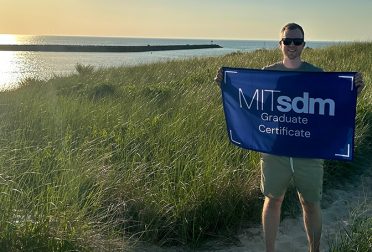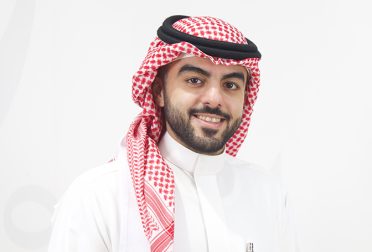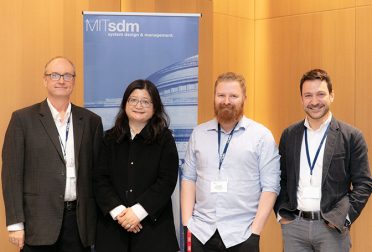by Kathryn O’Neill
When Covid-19 lockdowns forced legions of employees to work from home in 2020, Jack Yao SDM ’15 saw a huge leap in demand at his startup, Mobile Pixels Inc. The company, which sells monitor extension kits and other tools to help people work productively from anywhere, ballooned from three employees and $4.2 million in sales at the end of 2019 to $13.6 million by the end of 2020. This year, Yao says he expects to reach $20 million in sales.
While nobody could have predicted this path to success, Yao credits MIT with giving him the skills not only to launch his company but to thrive through the pandemic.
Yao earned master’s degrees in engineering and management through MIT System Design and Management (SDM), which teaches its fellows to use systems thinking to understand the technical, managerial, and societal components of large-scale, complex challenges. Yao, who was a business leader at GE Aviation when he arrived at MIT in the fall of 2015, says he wasn’t expecting to launch a company when he enrolled in SDM; he simply hoped to advance his career at GE. He says MIT’s entrepreneurial ecosystem made his success not only conceivable but achievable.
“I thought you had to be a real genius to start a company. But when you are at MIT, everyone next to you is starting a company, so that goal becomes more realistic,” Yao says. In fact, two of SDM’s core instructors—Bryan Moser, academic director and senior lecturer, and Bruce Cameron, lecturer and director of the System Architecture Lab—are both successful entrepreneurs.
The SDM curriculum also gives students the tools entrepreneurs need to start companies, Yao says. “A lot of the business classes are taught with an entrepreneurship focus. You have to write a business plan, build financial statements, research the competition, and put a pitch deck together,” he says. “On the engineering side, in every class you had to build a working prototype. So, that combination really prepped students to start their own companies.”
Not surprisingly, when Yao got an idea for a product during the summer of 2016, he knew just what to do. The inspiration for Mobile Pixels’ first product — a portable external monitor that attaches to a laptop as a second screen — came to him during his SDM summer internship at Amazon. Frustrated by the constraints of working on his one small laptop screen, he thought: “Wouldn’t it be great if another screen could slide out?”
Once back at MIT, Yao picked up some off-the-shelf components and built a working prototype in the Hobby Shop. “My classmates and professors thought it was cool and said: ‘Could you make one for me?'” he says. Eventually, he teamed up with his roommate, Stephen Ng, a mechanical engineering student at Northeastern University, to build more sophisticated prototypes. Yao’s SDM classmate Shruti Banda joined to help the team develop its marketing strategy, and the three officially founded Mobile Pixels in January 2018.
With some seed funding and mentorship from MIT’s Sandbox Innovation Fund and from a similar program at Northeastern, Mobile Pixels launched a crowdfunding campaign through Kickstarter. In October 2018, the company won the $100,000 Diamond Prize from the startup accelerator MassChallenge. “That’s when we decided to pursue this full-time,” Yao says, noting that the crowdfunding effort raised $1.5 million in presales. “We were on the hook for like 6,000 monitors, and that was not going to happen while working part-time.”
To build and grow Mobile Pixels, Yao says he has relied heavily on core lessons from the SDM curriculum, including:
- Creating a product platform — a set of common parts that different products can share. Using this strategy has enabled Mobile Pixels to minimize the complexity of creating different products, Yao says. “If you build the backbone to your product line off a platform, it’s much easier to create variations or refinements off that.”
- Maintaining flexibility through modularity. Mobile Pixels’ first product, Duex, was a secondary screen that attaches to a laptop with magnets. To develop Trio, which adds a third screen, Yao says the team used a modular design. “Buy one if you need one; clip two together if you need three,” he explains. “This allows us to sell to people who need three displays while not pricing out people who only need one extra display.”
- Balancing project scope, budget, and time—what’s known as the “iron triangle” of product management. “Manufacturing the old products while designing new ones is a tug of war in that triangle,” he says. Noting that SDM introduced him to some software programs for product management, he says he expects to use these lessons more as his company expands its product offerings. “I wish I’d done better in that class,” he adds with a laugh.
Of course, even the most seasoned executives were blindsided by the challenges of the global Covid-19 pandemic—and Mobile Pixels was just two years old. Yao has succeeded in navigating the unprecedented supply chain challenges thanks in part to lessons learned as a teaching assistant for MIT’s Supply Chain Management Program.
“One of the concepts that I learned to conquer supply chain uncertainty is to pool your inventory,” he says. So, rather than allow retailers to hold inventory, Mobile Pixels chose to drop-ship orders—a decision that enabled the business to control supplies even as demand soared.
Yao also anticipated the supply chain shortages that are now making headlines and acted early. “In February 2020, we talked to our supply chain partners in China and decided to air freight our monitors instead of going by ocean freight,” he says. To ensure continued production, the company also stocked up on components. “Eighteen different things go into our monitor, and if one thing is missing, the other 17 have to wait,” he says. “We saw shortages coming and poured all our cash into building a strategic stockpile for this year, and that has really paid off.”
Indeed, Mobile Pixels is doing so well now that Yao has already fielded several acquisition offers (although he says he and Ng have no plans to sell the business; Banda left the company in 2019). It’s a level of success Yao never anticipated when he arrived at MIT, but which he believes his SDM experience made possible.
“I think SDM is great because of the exposure to both engineering and management. The two go hand in hand if you’re going to start a company,” Yao says. “But going through SDM is much more than that. It’s the immersive experience, the friendships you make, and just being able to learn not only from instructors but also from your peers.”




